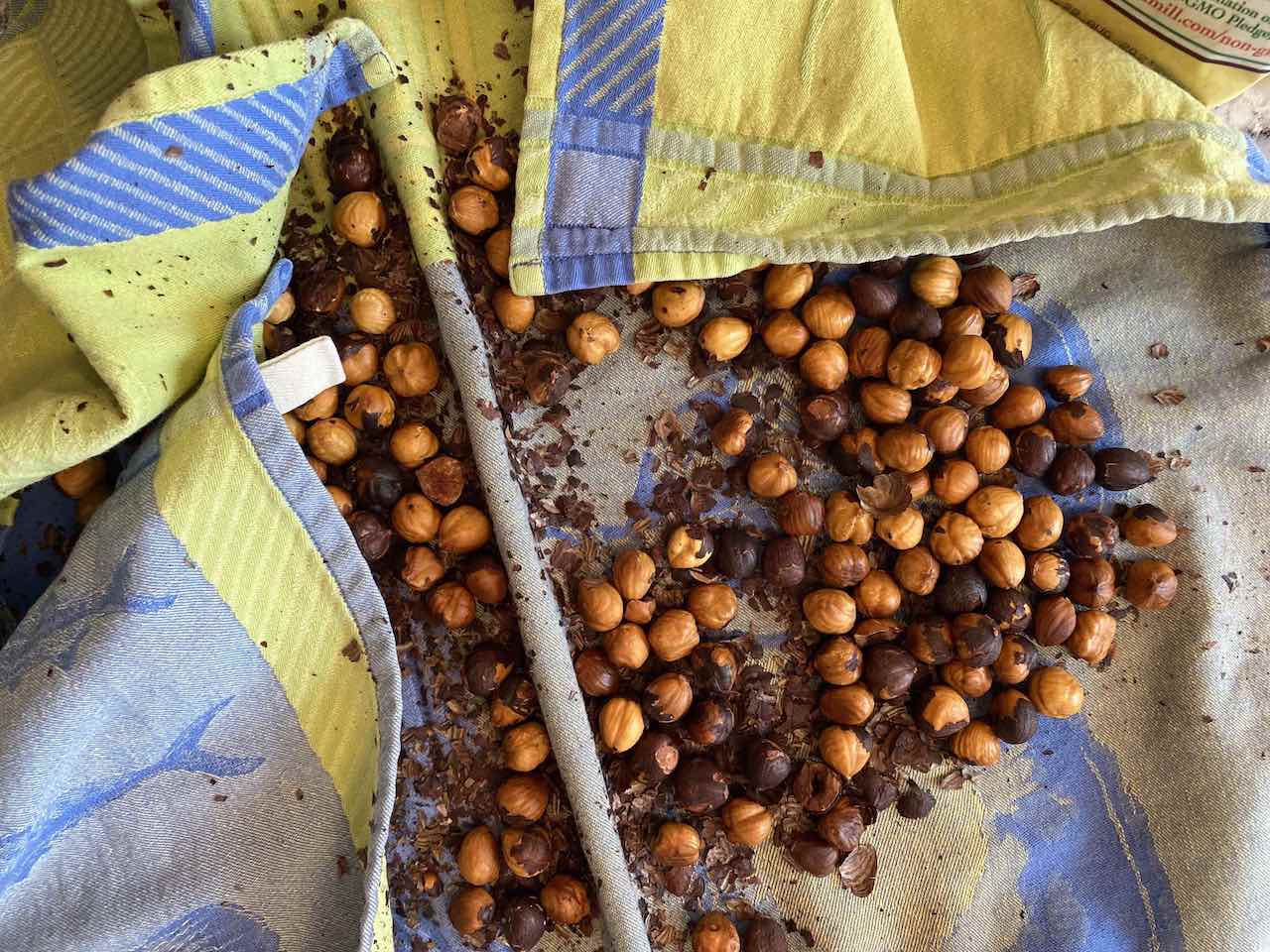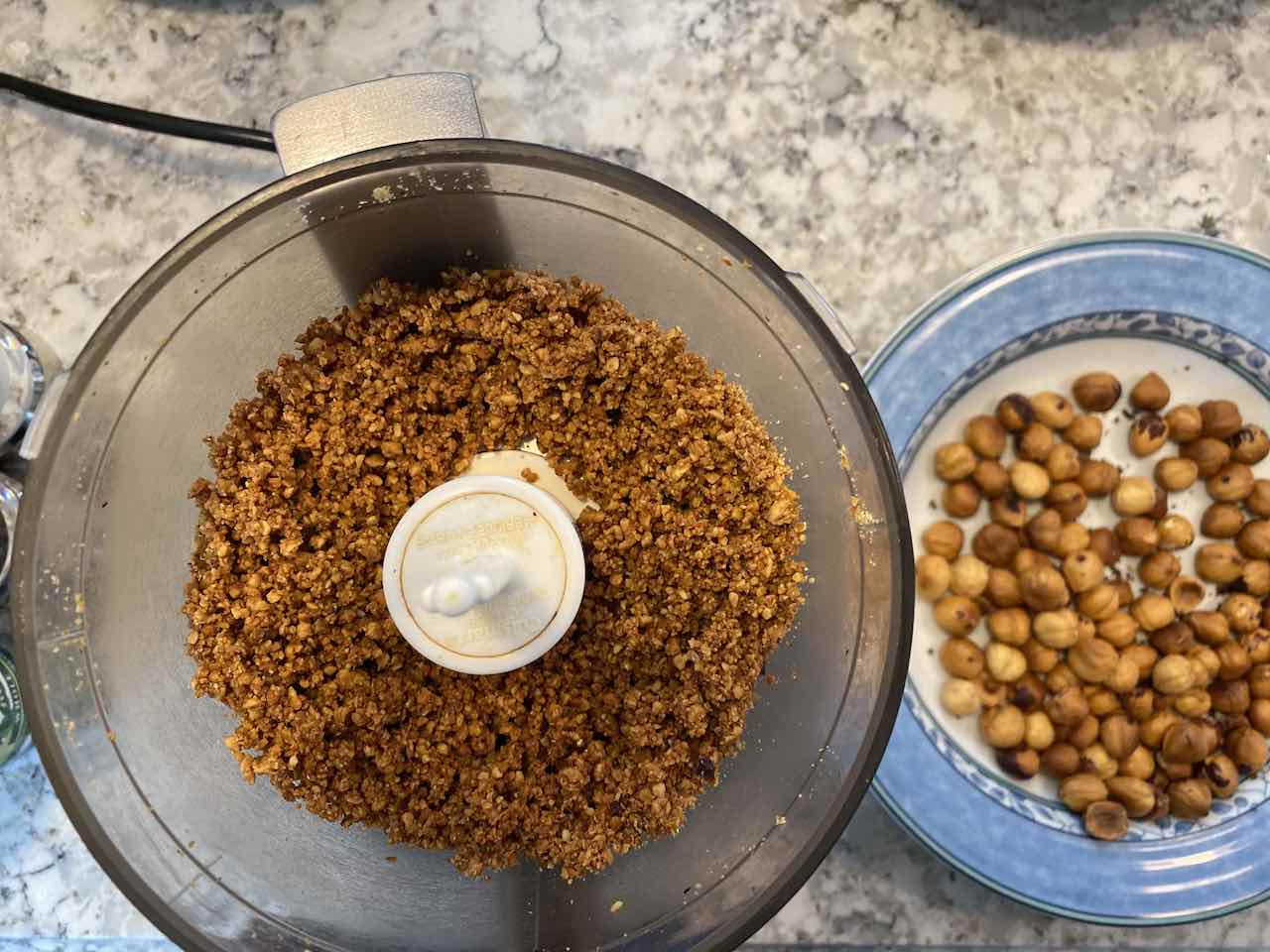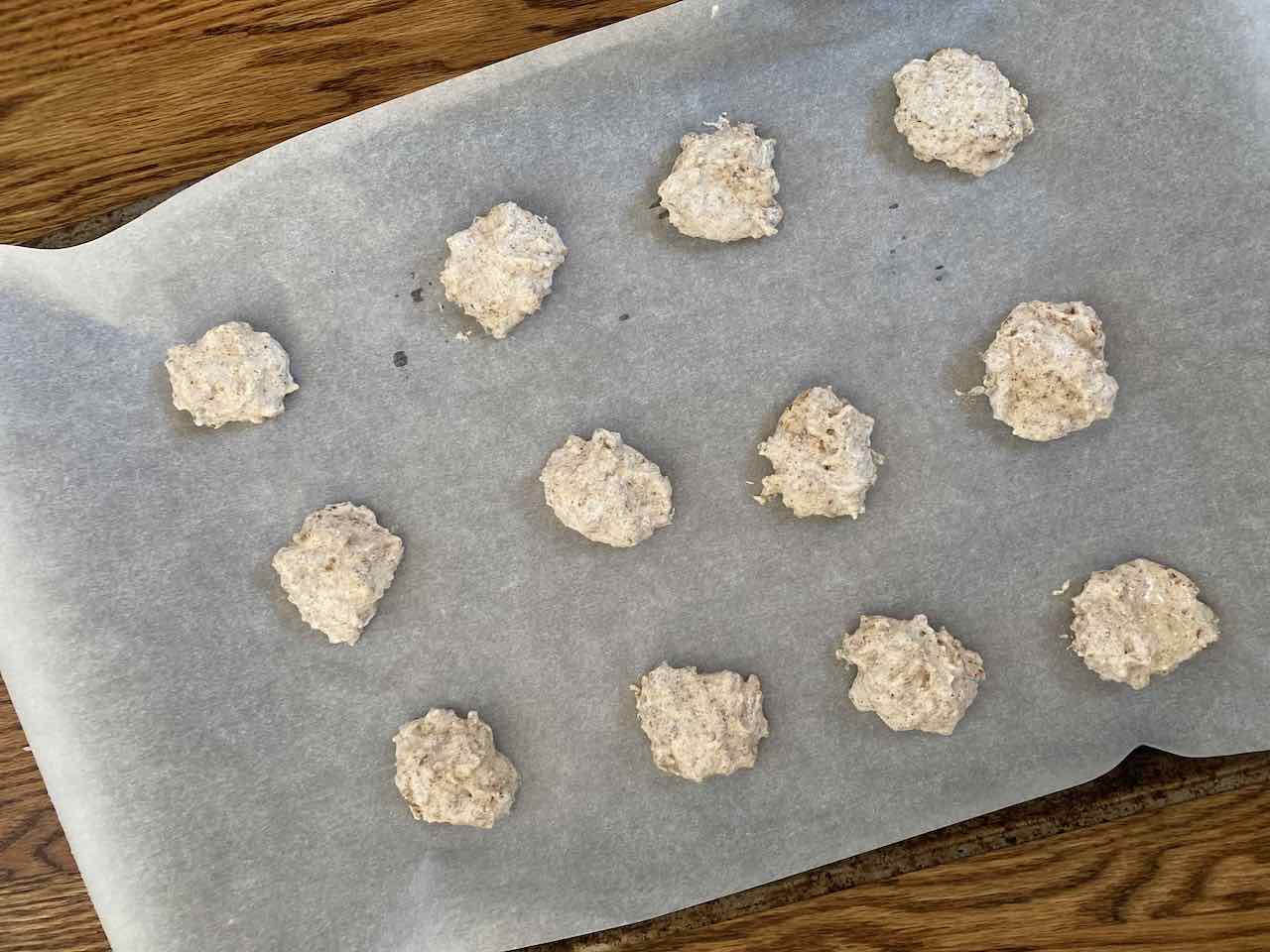
Hazelnut-Raspberry Macaroons
When I lived in Germany, I learned one very important thing: Christmas is a really big deal. Christmas markets spot the city, advent wreaths with candles sit on dining room tables, and the whole country shuts down for two and a half days at Christmas. Plus, there are Christmas cookies. I had always thought that Christmas cookies were those sad little sugar cookies that you decorate with colored frosting that no one enjoys eating. But the variety of cookies for a German Christmas was so much more interesting and exciting.
These hazelnut-raspberry macaroons come from one of my favorite cookbooks, Luisa Weiss’s Classic German Baking, one of the few cookbooks to make German baking accessible to an American audience (and pantry). This cookie is a new favorite – it’s light and fluffy, with a good mix of tart from the jam and sweet from the cookie.
Having raved about this cookie (and having eating far too many of them), I’m now going to do my usual pivot to focus on hazelnuts, which unfortunately have a terrible supply chain. It seems especially wrong to discuss bad labor conditions in a post about Christmas cookies. But the sad truth is that hazelnuts – this week’s topic – are used in a lot of festive foods and common chocolate snacks – like Nutella and the gold-wrapped Ferrero chocolates – and yet child labor and poverty wages are the norm for much of the industry, especially in Turkey, which produces 70 percent of the world’s hazelnuts.
Turkey is by far the world’s largest hazelnut producer, with about 600,000 hazelnut farms. Hazelnuts are a seasonal crop. Each year, families travel to Black Sea region, where most of the hazelnut farms are located, to work in the harvest, which lasts about 30-45 days. The harvest is difficult and dangerous work, with trees often planted on steep inclines. Workers often work 10-12 hours per day, seven days a week, without additional pay for overtime. They rarely have formal contracts, often pay a middleman to acquire these low-paying jobs, and may have their wages delayed. The accommodations are often inadequate, with no clean water or sanitation facilities. As is so often true, children work on these farms because the wages paid to their parents don’t cover their families’ cost of living. The reason these wages are so low is that the big companies – like Ferrero and Nestlé – don’t pay enough for the hazelnuts.
According to reports, Ferrero appears to be the worst of the large brands operating in the Turkish hazelnut industry. Ferrero has refused to provide any transparency about its supply chain. Instead, according to The Guardian, it tries to avoid blame by explaining that it doesn’t own the hazelnut farms in Turkey. Yet, as in so many industries (cocoa, coffee, tea), a company does not need to own the farms to control the industry. While Nestlé has at least worked with the Fair Labor Association to monitor some of the farms they source from and learn about the working conditions on those farms, Ferrero appears to have done little to nothing to implement changes. Although Nestlé’s supply chain is far from perfect – the FLA found child labor on the hazelnut farms they source from, as well as low wages and inadequate housing – working with the FLA to learn about the problems is a small start. It’s clear that Nestlé needs to pay more for hazelnuts and implement real changes in its supply chain.
Though not nearly as large a producer as Turkey, the US grows hazelnuts as well. 99 percent of US-grown hazelnuts are from Oregon. (Oregon’s state nut is, unsurprisingly, the hazelnut.) There are also many fewer labor issues in Oregon, in large part because farmers seem to use machines to do most of the work of picking hazelnuts.
The main thing that I have taken from researching the hazelnut industry is that Ferrero is a bad actor. Its lack of transparency is concerning, especially in a supply chain as long and complex as this one. Sadly, for all the Nutella lovers out there, this also means you may want to slow down your Nutella consumption. But the real takeaway is the same as in so many other industries: companies need to pay more for the goods that they buy, whether hazelnuts or cocoa. Without higher pay, these labor violations will continue to occur. Have time during the pandemic? Give Ferrero and Nestlé a call and tell them what you think!
Hazelnut-Raspberry Macaroons
Course: Dessert, Recipe30
servings1
hour30
minutesAdapted from Luisa Weiss’s recipe for Haselnuss-Himbeer Makronen (Hazelnut-Raspberry Macaroons) in Classic German Baking.
Ingredients
1 ¾ cups whole unskinned hazelnuts
2 egg whites
¼ teaspoon sea salt
¾ cups granulated sugar
½ cup raspberry jam or preserves
Directions
- Preheat the oven to 400 degrees. Put parchment paper on a baking sheet and place the hazelnuts on it. Bake for 15 minutes. When they have darkened, take them out and pour them onto an old kitchen towel (one that can get a bit dirty). Rub them roughly to get most of the skins off. They don’t have to be perfect, but try to get as much off as you can.

- When the hazelnuts have cooled, grind them in a food processor until they are finely ground. Don’t grind them too long – they should not become a paste.

- Next, using a hand mixer, mix the eggs and salt until they become frothy. Slowly add the sugar and mix until you have soft peaks. (This means that the peaks just start hold their shape and flop back over). Add 1 ½- 1 ¾ cups of hazelnuts and fold them into the mixture carefully. At this point the mixture should be thick but should hold its shape when formed.
- Scoop out a small spoonful (about one tablespoon) of dough and place it on a cookie sheet lined with parchment paper. Repeat until the cookie sheet is full, leaving about one inch between each cookie.

- Bake for 10 minutes. When you take the cookies out of the oven, press down in the middle of each cookie with a teaspoon to form a small divot. Then remove from the cookie sheet to a cooling rack so that they do not continue to bake.
- Meanwhile, warm the jam in a small pot over medium-high heat until it is bubbling. Let it bubble for about 30 seconds, until it becomes a liquid.
- Pour a small spoonful of jam into the divot in each cookie. Let cool and enjoy!




